In addition to ensuring carbon neutral Group business activities by 2050, we will also aim for decarbonization across the supply chain. Moreover, through endless technological reforms and use of hydrogen and renewable energy, we will aim to contribute to the creation of a carbon neutral society.
The Air Water Group consumes large amounts of energy in its business operations, mainly in the production of oxygen and nitrogen at its industrial gas plants, and emits a large amount of CO\( \sf _2 \) as a result of these processes. We therefore recognize that climate change countermeasures are a major risk related to the continuation of our business operations, and we take steps to reduce CO\( \sf _2 \) emissions across our Group’s operations.
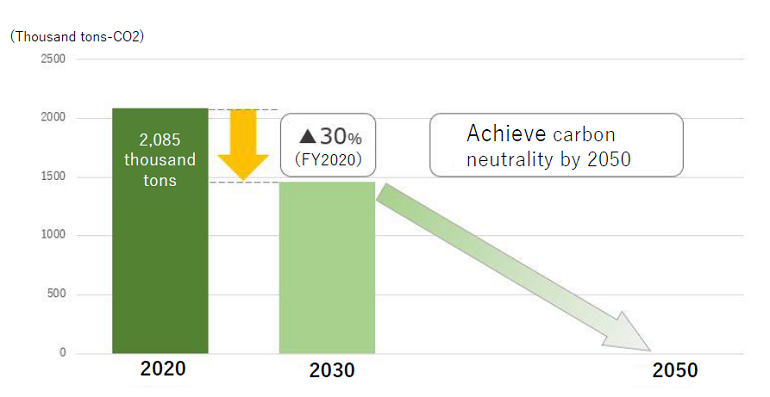
With the Air Water Group’s formulation of Environmental Vision 2050, the Group has revised its CO\( \sf _2 \) emissions targets (Scope 1 and 2) of its consolidated subsidiaries in Japan for fiscal 2030 as a milestone in the effort to contribute to a carbon-neutral society. The newly adopted target is a 30% reduction (relative to fiscal 2020* levels) by fiscal 2030 based on the GHG Protocol. The entire Air Water Group is committed to supporting the emergence of a carbon-neutral society.
Note: Energy-derived CO\( \sf _2 \) emissions from consolidated subsidiaries in Japan based on the GHG Protocol totaled 2,084 t-CO\( \sf _2 \) in fiscal 2020.
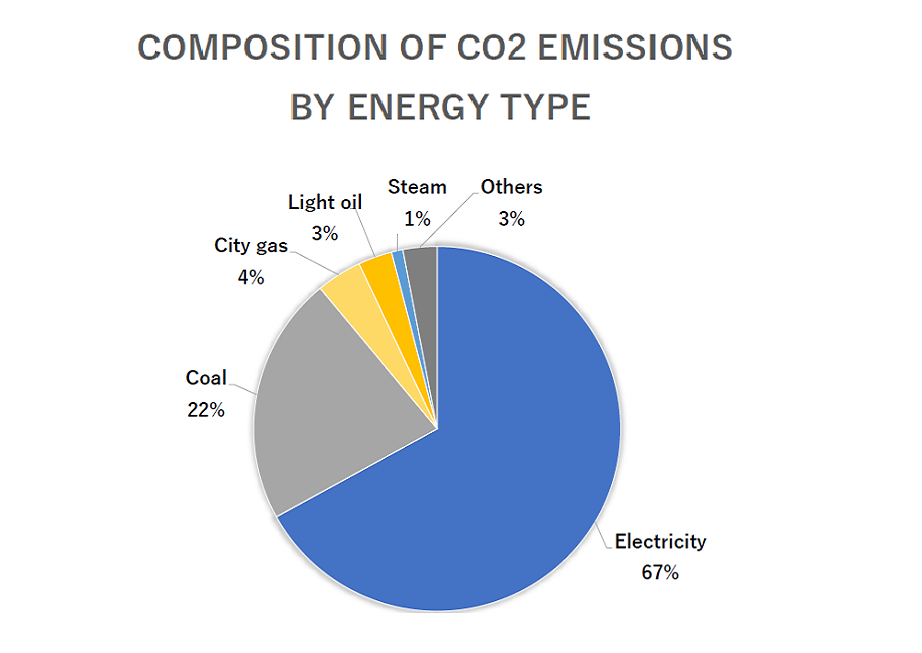
Note: Energy-derived CO\( \sf _2 \) emissions from consolidated subsidiaries in Japan based on the GHG Protocol totaled 2,085 t-CO\( \sf _2 \) in fiscal 2020.
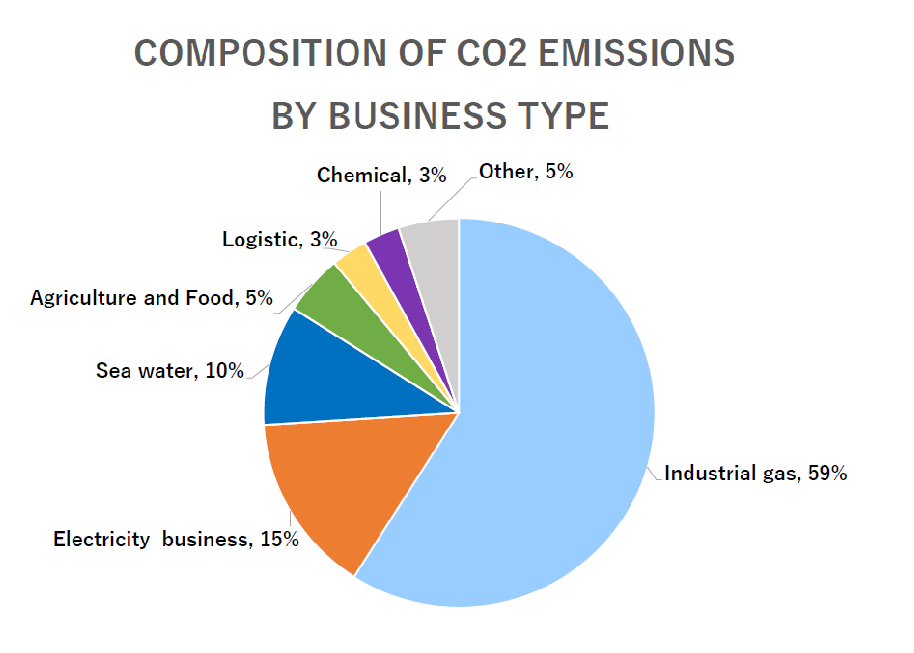
Note: Energy-derived CO\( \sf _2 \) emissions from consolidated subsidiaries in Japan based on the GHG Protocol totaled 2,085 t-CO\( \sf _2 \) in fiscal 2020.
The Group aims to improve productivity in order to reduce CO\( \sf _2 \) emissions, thereby achieving both reduction targets and business growth. The following five initiatives are intended to promote the achievement of our CO\( \sf _2 \) reduction targets.
①Reducing energy consumption ②Decarbonizing energy sources ③Reforming production processes ④Pursuing technological development ⑤Increasing management efficiency
To date, our Group has been focused on maintaining efficient plant operation and introducing highly efficient state-of-the-art equipment with the goal of reducing CO\( \sf _2 \) emissions by 6% in fiscal 2021 and 15% by fiscal 2030 relative to fiscal 2013 levels.
In fiscal 2020, CO\( \sf _2 \) emissions factors were revised at some of the plants belonging to the 34 Air Water Group companies designated as Specified Business Operators under the Act on the Rational Use of Energy, and as a result CO\( \sf _2 \) emissions increased by 229,000 t-CO\( \sf _2 \). However, a slowdown in production rates caused by declining customer demand saw overall emissions fall by 6.4% over fiscal 2013 (105,000 t-CO\( \sf _2 \)).
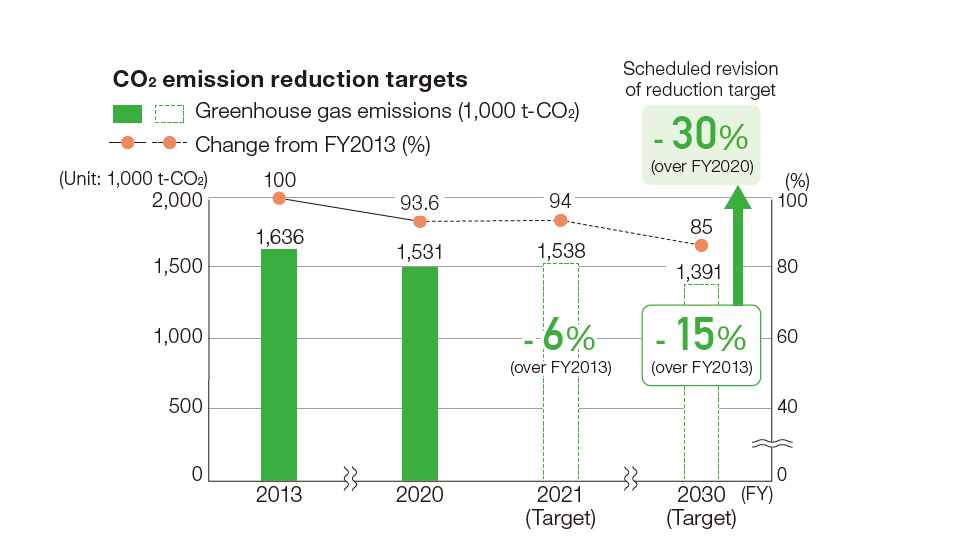
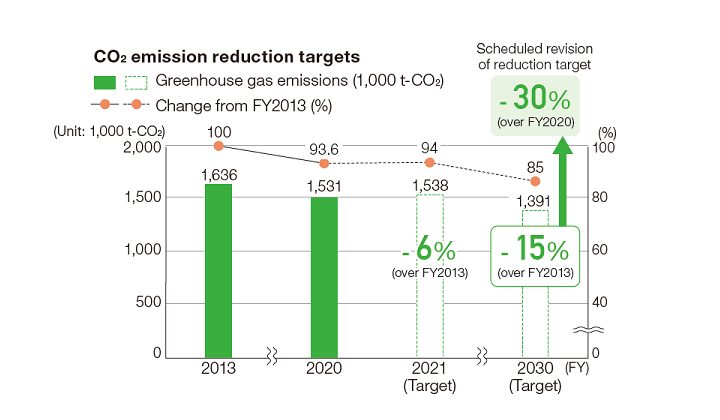
Scope of collection: Companies classified as Specified Business Operators under the Act on the Rational Use of Energy (Air Water and 33 Group companies [34 companies in total])
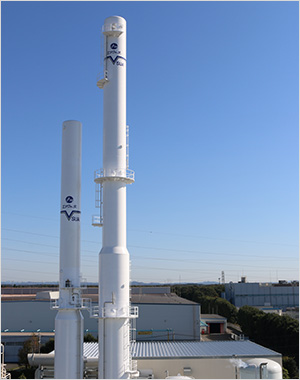
- 拡大
- The newest plant at the Utsunomiya Factory
Air Water’s industrial gas plants use air as a raw material in order to produce oxygen, nitrogen, argon, and other gases. Producing these gases, however, entails processes that consume large amounts of electricity. Therefore, our CO\( \sf _2 \) emissions are discharged indirectly through the thermal power plants of electric power companies, so reducing CO\( \sf _2 \) emissions remains an important issue for the Air Water Group.
Air Water is working to reduce CO\( \sf _2 \) emissions by minimizing its electricity consumption through an effort to update any aging machinery in operation at our plants.
The Air Water Group is working with logistics companies to conserve energy and reduce CO\( \sf _2 \) emission.
In contrast to our targeted reduction of energy consumption intensity by a minimum average of 1% over the medium and long terms (over the past five fiscal years), actual results showed a deterioration of 0.9% during the five fiscal years. This result was mainly due to increased trucking in the seawater business in fiscal 2019 and increased long-distance transportation in the industrial gas-related business in fiscal 2020.
In the future, we will work to reduce the delivery distance for industrial gas by establishing a new VSU (small liquefied oxygen and nitrogen manufacturing facility) in our industrial gas business, adopting full land transportation for our seawater-related business, utilizing full sea transportation and larger transport vessels, and reducing transportation distances through warehouse relocation in our chemical business in order to reduce energy intensity and CO2 emissions.
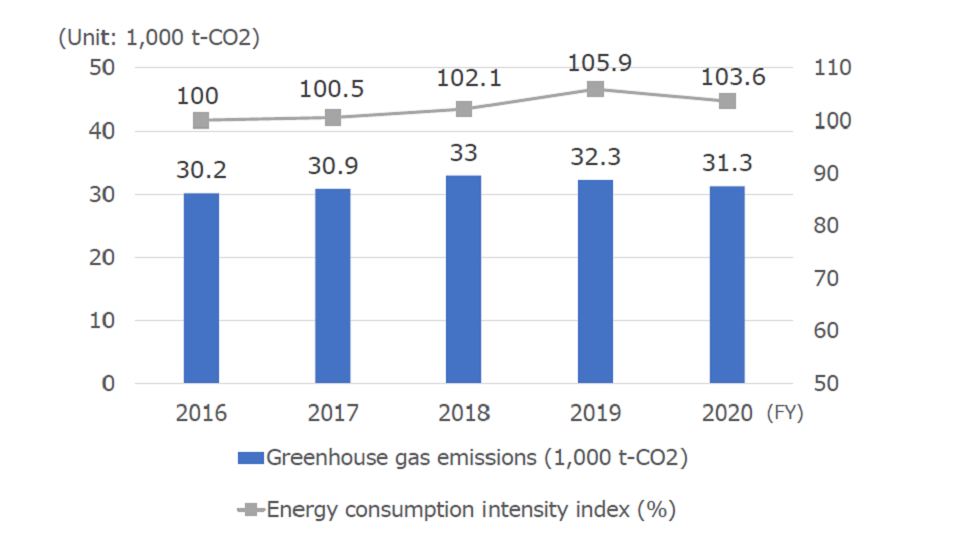
Note: The above data is based on the data of specified shippers under the Act on the Rational Use of Energy.
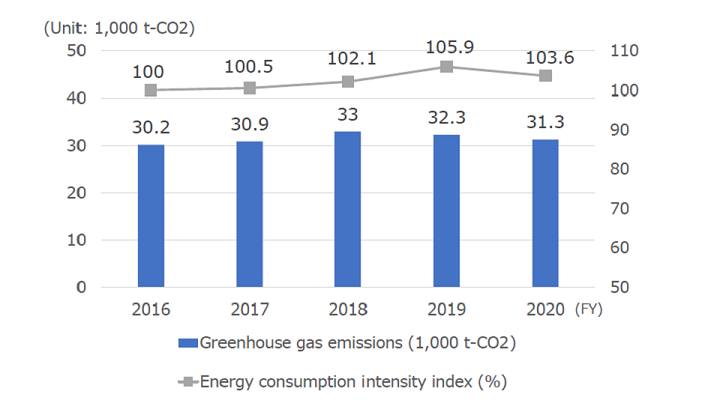
Note: The above data is based on the data of specified shippers under the Act on the Rational Use of Energy.
In addition to monitoring the emissions resulting from our own energy consumption (Scopes 1 and 2), the Air Water Group calculates CO\( \sf _2 \) emissions attributable to our supply chain (Scope 3).
In order to clarify the sources of CO\( \sf _2 \) emissions throughout the Air Water Group’s supply chain, we calculate emissions by their scope number. CO\( \sf _2 \) emissions attributable to the entire supply chain are categorized and calculated according to the Basic Guidelines for Calculating Greenhouse Gas Emissions through the Supply Chain issued by Japan’s Ministry of the Environment.
|
CO\( \sf _2 \) emissions |
Notes |
|---|
|
Scope 1 |
656 |
Direct emissions generated through use of in-house fuel, etc. |
|---|
|
Scope 2 |
1,429 |
Indirect emissions generated through use of electricity, steam, etc., from other companies |
|---|
|
Scope 3 |
2,278 |
Indirect emissions generated through business activities across the supply chain |
|---|
|
Category |
CO\( \sf _2 \) emissions |
|---|
|
1 |
Purchased goods and services |
463 |
|---|
|
2 |
Capital goods |
155 |
|---|
|
3 |
Fuel and energy-related activities not included in Scope 1 or 2 |
201 |
|---|
|
4 |
Transportation and delivery (upstream) |
31 |
|---|
|
5 |
Waste generated in operations |
19 |
|---|
|
6 |
Business travel |
2 |
|---|
|
7 |
Employee commuting |
4 |
|---|
|
8 |
Leased assets (upstream) |
- |
|---|
|
9 |
Transportation and delivery (downstream) |
- |
|---|
|
10 |
Processing of sold products |
- |
|---|
|
11 |
Use of sold products |
1,403 |
|---|
|
12 |
End-of-life treatment of sold products |
- |
|---|
|
13 |
Leased assets (downstream) |
- |
|---|
|
14 |
Franchises |
- |
|---|
|
15 |
Investments |
- |
|---|
|
Total |
2,278 |
|---|
Notes:
• Category 1 is calculated by multiplying the purchase amount (from amount data) of primarily raw materials purchased by plants subject to material balance when determining the emissions intensity for each product.
• Category 11 includes CO\( \sf _2 \) emissions from the use of fuels (LNG, CNG, LPG or kerosene), liquefied carbon dioxide, and dry ice sold to customers outside the Group.
• Categories 10 and 12 are not included in the tabulation because they are difficult to calculate at this time.
• No businesses fall under Categories 8, 9, 13, 14 or 15.
The Air Water Group discloses greenhouse gas emissions in the Air Water Report and on its website. To ensure that the data we provide are highly transparent and verified from an independent, objective perspective, we have received third-party verification for our greenhouse gas emissions since fiscal 2017.
We will continue working to provide even more reliable data to outside stakeholders through third-party verification of our greenhouse gas emissions.

In August 2021, Air Water announced its support for the recommendations of the Task Force on Climate-Related Financial Disclosures (TCFD)—established by the Financial Stability Board*1—and joined the TCFD Consortium. The TCFD recommends the disclosure of information relating to climate change, namely governance, strategies, risk management, indicators, and targets. At the Air Water Group, we are moving forward with efforts to ensure appropriate information disclosure based on these recommendations.

The Air Water Group takes part in surveys by the CDP,\( \sf ^* \) an organization that collects information on and evaluates climate change activities by major global companies. As a result, we were rated "A-" in fiscal 2019, and "B" in fiscal 2020 for our climate change efforts and information disclosure.
In addition to the CDP Climate Change questionnaire, we also respond to the “CDP Water Security” questionnaire concerning depletion of water resources and other related issues. In fiscal 2019, we received “B-” and “B” for the water security efforts.
*An international non-profit organization based in London. Aiming to promote corporate efforts toward a low-carbon society, CDP considers climate-related management risks, collects, analyzes, and evaluates climate change information from major global companies, and discloses the results to institutional investors.
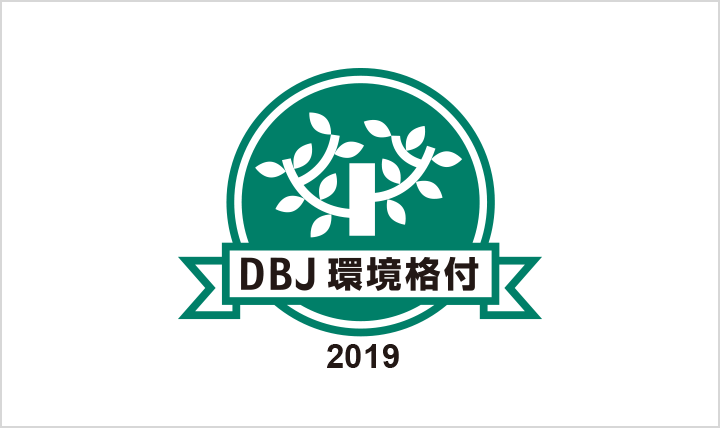
In March 2020, Air Water was ranked as “a company with excellent advanced environmental initiatives” by the Development Bank of Japan (DBJ). We were highly rated in a number of areas, such as our firm implementation of environmental management across the group, our efforts to reduce the environmental impact of our business activities through endless improvements and ongoing investments in environmental conservation, and our development of businesses that contribute to the solution of social challenges. This ranking made us eligible for loans under the DBJ Environmentally Rated Loan Program.
*A global first, DBJ offers preferential loans based on the degree to which corporations carry out environmental management.

